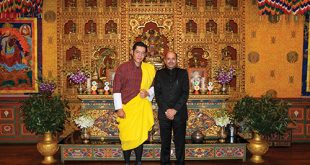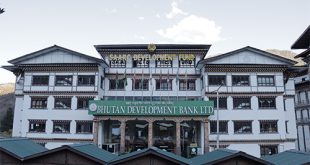In a 12-month period from the July 2024 to June 2025, a total of 6,186 Bhutanese students and their dependents have availed themselves of student visas.
This is the third highest ever number of visas granted compared to 15,552 visas in 2022-23 financial year and 9,787 visas in the 2023-24 financial year.
The fourth highest year is 2019-20 when 2,933 visas were granted.
The above data shows that while there is a decline in the numbers of students and dependents headed to Australia, however, the numbers are still above the pre-pandemic numbers.
A total of 8,891 Bhutanese students and dependents had applied for visas in 2024-25 financial year, showing that 2,705 applications were rejected.
However, a major difference in the 2024-25 FY data is that it contains the highest ever number of those who got visas while already in Australia.
2,168 of those who got the visas were already located in Australia which means that they are extending their stay there by taking other study courses.
This is compared to 1,233 in 2023-24 and 1,620 visas in 2022-23 who were already in Australia.
This means that in effect only 4,018 Bhutanese left from Bhutan in 2024-25 to get visas.
The above data also answers important questions on whether Bhutanese will come back and how long they plan to stay there. It is clear, now, that for many Bhutanese, if the opportunity is available, do not plan to come back anytime soon and keep planning to extend their stay in Australia.
Of the 6,186 who got visas 2,965 are students and 3,221 are dependents.
Chairman of the Association of Bhutanese Education Consultancies (ABEC), Palden Tshering, said the number of 6,186 is higher then what he expected, as he predicted around 5,000 but it still shows the number is going down.
He said in the upcoming 2025-26 FY in the next 12 months, the number will even go lower and eventually it will plateau between 2,000 to 3,000 per year.
Palden said that as time goes by, it will get increasingly difficult for those reaching 35 years or more as they do not get a post study visa, and though they still have the option of taking other courses, it will be a hand to mouth situation as the real money is only made in the post study work visa.
He said back home, as numbers reduce, it will also get tougher for education consultancies and it will be a ‘survival of the fittest.’
He said that the main and preferred destination is still Australia, and there is not much interest for Dubai, Germany, etc., for studies.
When one looks at the age group the 0 to 14 age group who are essentially children is 718 showing how parents are taking their children with them to Australia.
The 15 to 19 years group are 323.
The largest group of the lot is the 20 to 29 age group coming to 3,204.
The 30 to 39 group is 1,584 and it will get increasingly difficult for this group to stay on.
The 40 to 49 group is 329. Those above this are only 28 in number.
The largest numbers of 3,886 are in Western Australia (Perth) followed by 564 to Queensland (Brisbane), 306 in Australian Capital Territory (Canberra) and so on.
In the last three financial years, from June 2022 to July 2025 Bhutan has seen 31,525 visas issued to Australia. In 2025 the NSB estimates Bhutan population to be 784,043.
This means around 4 percent of Bhutan’s population has left for Australia in the last 36 months or three financial years.
The loss of such large numbers to Australia is already having a devastating impact on Bhutan’s local economy as many businesses like grocery, restaurants, shops, salons, etc., have noted a significant decline in customers.
Even new commercial buildings in Thimphu are finding it difficult to get tenants or the rents they expect and real estate prices are stagnant. The benefit, on the other hand, has been a surge in remittances.
It is hoped that once economic opportunities open up in Bhutan, there will be those coming back.
 The Bhutanese Leading the way.
The Bhutanese Leading the way.




